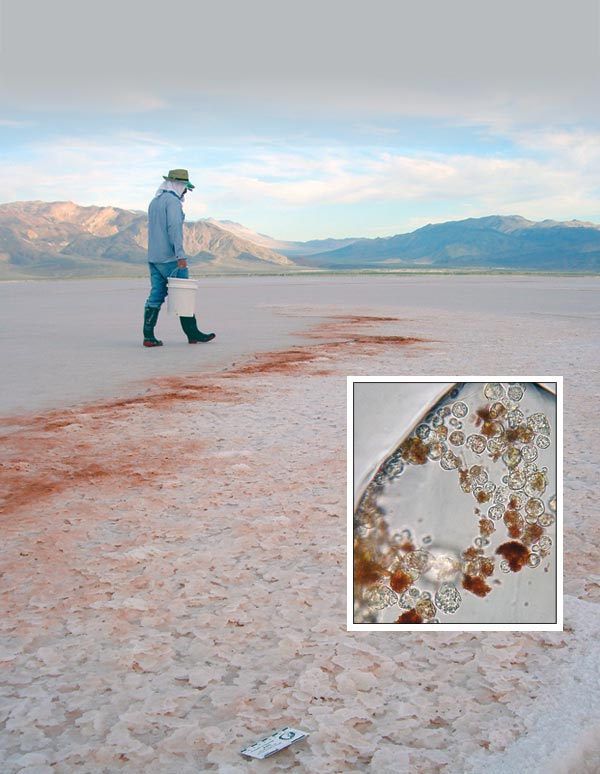GSA Today
Volume 21, Number 1 (January 2011)

About the cover:
Saline Valley salt pan, October 2005, view to the northeast. The salt pan is covered with salt chips, sunken plates of coalesced halite crystals, formed in a hypersaline lake, now dry. Red coloration of halite is produced by organic pigments, such as b-carotene, used by halophilic microorganisms for protection from ultraviolet radiation. Color photomicrograph inset shows algal cells of the genus Dunaliella, some covered with b-carotene, inside a fluid inclusion in 34 ka subsurface halite from Death Valley, California, USA. The algae accumulate intracellular glycerol, which may be a food source used by prokaryotes for long-term survival in fluid inclusions in halite. See related article by T.K. Lowenstein et al., p. 4–9.
© The Geological Society of America, Inc.